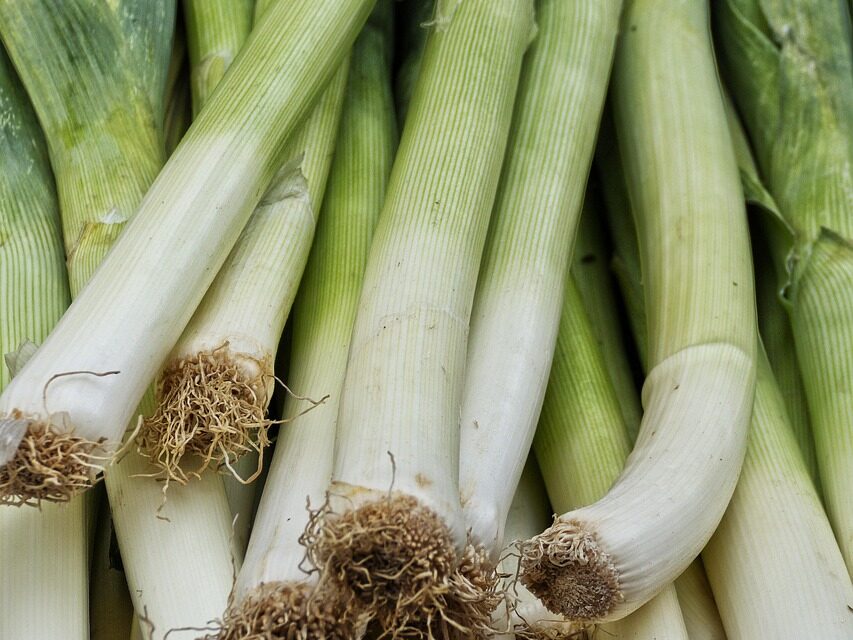Crop shifting and drought-resistant crops in The Great Salt Lake water shortages impact several areas, towns, and cities in Utah.
Crop shifting and drought-resistant crops, etc
The Great Salt Lake: A Lifeline Drying Up
Imagine: A majestic lake, once a vibrant hub of life, shrinking before our eyes. The Great Salt Lake, a vital part of Utah’s soul, is facing a crisis.
Wildlife Struggle: Birds, fish, and countless other creatures depend on this lake for survival. As its waters recede, their home disappears, threatening their very existence.
A Legacy in Peril: The Great Salt Lake is more than just a body of water. It’s a tapestry woven with history, culture, and countless stories. This shrinking lake jeopardizes Utah’s rich heritage and cultural identity.
A Race Against Time: The sun’s relentless heat is stealing the lake’s water, leaving behind a stark reminder of the severity of the situation. Organizations like the Active Climate Rescue Initiative are fighting to save this iconic landmark, but time is running out.
The Stakes are High: The Great Salt Lake is a vital ecosystem, providing clean air, boosting tourism, and supporting a thriving web of life. Its disappearance would be a devastating loss for Utah and beyond.
Join the fight to save the Great Salt Lake. It’s not just about water, it’s about our future.
The Great Salt Lake: A Sea of Troubles?
TL;DR: The Great Salt Lake is shrinking because of climate change and too much water use. This hurts wildlife, the economy, and the whole region. We need to save water, use it wisely, and grow crops that need less water to help the lake and ourselves.
A Sea of Change: The Great Salt Lake’s Water Journey
The Great Salt Lake is a giant, salty lake in Utah. It’s a vital part of the ecosystem, providing a home for many birds, fish, and other wildlife. But the lake is shrinking, and that’s a big problem.
The Great Salt Lake’s water comes from rivers and snowmelt that flow from the mountains around it. Here’s how the water cycle works:
- Snowfall: Snow falls on the mountains and builds up in the winter.
- Snowmelt: As temperatures warm up in the spring, the snow melts and flows into rivers and streams.
- River Flow: These rivers carry the water down from the mountains and into the Great Salt Lake.
- Evaporation: The hot sun causes some of the water in the lake to evaporate and become water vapor in the air.
The Great Salt Lake’s Problems
The Great Salt Lake is facing a water shortage crisis. Here’s why:
- Climate Change: The climate is changing, and this is affecting the water cycle. We’re seeing less snowfall, which means less water flowing into the lake.
- Water Use: People in Utah use a lot of water for farming, drinking, and other purposes. This leaves less water for the Great Salt Lake.
The Impact of Water Shortages
When the Great Salt Lake shrinks, it has a big impact on Utah and the surrounding area:
- Wildlife: Many birds, fish, and other animals rely on the Great Salt Lake for food, water, and shelter. When the lake shrinks, these animals lose their homes and may even die.
- Economy: The Great Salt Lake is important for tourism and recreation. When the lake shrinks, tourism decreases, and businesses suffer.
- Air Quality: The Great Salt Lake helps to keep the air clean by trapping dust and pollutants. When the lake shrinks, it becomes less effective at cleaning the air.
What Can We Do?
We need to act now to help the Great Salt Lake! Here are some ideas:
- Water Conservation: We can all do our part to save water by taking shorter showers, fixing leaky faucets, and watering our lawns less often.
- Innovative Irrigation: Farmers can use new irrigation techniques, like drip irrigation, that deliver water directly to plant roots and use less water overall.
- Drought-Resistant Crops: Farmers can grow crops that need less water, such as drought-resistant varieties of corn, wheat, and other crops.
- Policy Measures: Government agencies and organizations can work together to develop policies that promote water conservation and sustainable water use.
The Active Climate Rescue Initiative
The Active Climate Rescue Initiative (https://climate-rescue.org/) is a great example of an organization working to solve the Great Basin water supply shortages. They work on projects that improve water conservation and help protect the environment.
The Legacy of the Great Salt Lake: Historical Significance and Cultural Impact
The Great Salt Lake has always played a vital role in the history and culture of Utah. Native Americans have lived in the area for thousands of years, and the lake provided them with food, water, and other resources. The lake has also been important for early settlers, who used it for transportation and trade. Today, the Great Salt Lake continues to be a source of inspiration for artists, writers, and musicians. The lake’s shrinking is a reminder of how important it is to protect this vital natural resource for future generations.
Summary
The Great Salt Lake is a critical part of the Utah ecosystem, providing habitat for wildlife, boosting tourism, and keeping the air clean. However, climate change and excessive water use are shrinking the lake, threatening its health and causing damage to the surrounding environment and economy. We must take action to save the Great Salt Lake through water conservation, innovative irrigation techniques, drought-resistant crops, and supportive policy measures. Organizations like the Active Climate Rescue Initiative are working to find solutions to the water shortages in the Great Basin, including the Great Salt Lake. By learning about the Great Salt Lake’s unique historical significance and cultural impact, we can better understand the urgency of protecting it for future generations.
More on Crop shifting and drought-resistant crops…
- ## SEO Keywords for ‘Crop Shifting and Drought-Resistant Crops’
- crop shifting
- drought resistant crops
- climate change adaptation
- agricultural sustainability
- water conservation
- water scarcity
- drought resilience
- crop rotation
- intercropping
- agroforestry
- sustainable agriculture
- drought tolerant crops
- climate-smart agriculture
- dryland agriculture
- arid and semi-arid regions
- water stress
- drought mitigation
- crop breeding
- genetic modification
- biotechnology
- precision agriculture
- irrigation technologies
- water management strategies
- ## SEO Keywords for ‘Historical Significance and Cultural Impact’
- historical significance of crop shifting
- cultural impact of crop shifting
- indigenous knowledge systems
- traditional farming practices
- food security
- social equity
- environmental justice
- biodiversity conservation
- land use practices
- cultural landscapes
- cultural heritage
- intangible cultural heritage
- ethnobotany
- agricultural history
- food traditions
- traditional food systems
- cultural identity
- community development
- agricultural innovation
- agricultural development
- rural livelihoods
- food sovereignty
- ## Combined SEO Keywords
- crop shifting and drought resistance
- historical significance of drought-resistant crops
- cultural impact of drought-resistant crops
- climate change and crop shifting
- drought-resistant crops and food security
- indigenous knowledge and drought resistance
- traditional farming practices and drought adaptation
- crop shifting for sustainable agriculture
- cultural significance of drought-resistant crops
- historical impact of crop shifting on agriculture
- crop shifting and cultural landscapes
- drought-resistant crops and climate-smart agriculture
- traditional knowledge and drought resilience
- agricultural innovation and climate change adaptation
- drought-resistant crops and biodiversity
- water conservation and crop shifting
- historical impact of drought on agriculture
- cultural impact of drought on food systems
- crop shifting and rural livelihoods
- drought-resistant crops and land management
- historical and cultural significance of drought resistance
- agricultural sustainability and cultural heritage
- food security and drought adaptation
- crop shifting and climate resilience
- drought-resistant crops and indigenous peoples
- traditional knowledge and climate change adaptation
- historical and cultural perspectives on drought
- agricultural development and cultural practices
- climate change and cultural landscapes
- food sovereignty and drought-resistant crops
- crop shifting and community development
- sustainable agriculture and cultural identity
- historical and cultural impact of drought on communities
- crop shifting and climate change mitigation
- drought-resistant crops and environmental justice
- food systems and cultural heritage
- agricultural practices and cultural identity
- climate change and food security
- drought-resistant crops and agricultural sustainability
- historical and cultural significance of food systems
- crop shifting and land use practices
- drought-resistant crops and genetic resources
- cultural landscapes and climate change adaptation
- food systems and climate change mitigation
- crop shifting and agricultural innovation
- drought-resistant crops and food sovereignty
- cultural impact of climate change on agriculture
- historical significance of climate change adaptation
- agricultural practices and cultural landscapes
- food security and cultural identity
- crop shifting and sustainable food systems
- drought-resistant crops and food justice
- historical and cultural impact of agricultural practices
- climate change and traditional knowledge
- crop shifting and sustainable land management
- drought-resistant crops and agricultural practices
- cultural landscapes and climate change resilience
- food systems and cultural change
- crop shifting and environmental conservation
- drought-resistant crops and agricultural development
- historical and cultural significance of agricultural innovation
- climate change and food systems transformation
- agricultural practices and climate change adaptation
- food security and cultural landscapes
- crop shifting and climate change mitigation strategies
- drought-resistant crops and sustainable agricultural systems
- historical and cultural impact of food security
- agricultural practices and climate change impact
- cultural landscapes and climate change mitigation
- food systems and cultural heritage conservation
- crop shifting and climate change adaptation strategies
- drought-resistant crops and food production systems
- historical and cultural significance of agricultural practices in drought-prone areas
- climate change and agricultural practices
- food security and cultural traditions
- crop shifting and sustainable land use
- drought-resistant crops and agricultural resilience
- historical and cultural impact of food security in drought-prone regions
- agricultural practices and climate change response
- cultural landscapes and climate change adaptation strategies
- food systems and cultural transformation
- crop shifting and climate change adaptation in agriculture
- drought-resistant crops and agricultural innovation for food security
- historical and cultural significance of drought resistance in agriculture
- agricultural practices and climate change mitigation strategies
- food security and cultural heritage preservation
- crop shifting and sustainable agriculture in drought-prone areas
- drought-resistant crops and agricultural resilience to climate change
- historical and cultural impact of food production systems in drought-prone regions
- agricultural practices and climate change adaptation in agriculture
- cultural landscapes and climate change mitigation strategies
- food systems and cultural preservation
- crop shifting and climate change adaptation for food security
- drought-resistant crops and agricultural development for climate resilience
- historical and cultural significance of food systems in drought-prone areas
- agricultural practices and climate change adaptation in agriculture
- cultural landscapes and climate change mitigation strategies
- food systems and cultural change in drought-prone regions
- crop shifting and climate change adaptation strategies
- drought-resistant crops and agricultural innovation for sustainable food systems
- historical and cultural significance of agriculture in drought-prone regions
- agricultural practices and climate change mitigation
- food security and cultural heritage
- crop shifting and sustainable agriculture for food security
- drought-resistant crops and agricultural resilience in drought-prone areas
- historical and cultural impact of food systems in drought-prone regions
- agricultural practices and climate change adaptation strategies
- cultural landscapes and climate change mitigation
- food systems and cultural change in drought-prone areas
- crop shifting and climate change adaptation for food security
- drought-resistant crops and agricultural innovation for sustainable food systems
- historical and cultural significance of agriculture in drought-prone regions
- agricultural practices and climate change mitigation strategies
- food security and cultural heritage
- crop shifting and sustainable agriculture for food security
- drought-resistant crops and agricultural resilience in drought-prone areas
- historical and cultural impact of food systems in drought-prone regions
- agricultural practices and climate change adaptation strategies
- cultural landscapes and climate change mitigation
- food systems and cultural change in drought-prone areas
- crop shifting and climate change adaptation for food security
- drought-resistant crops and agricultural innovation for sustainable food systems
- historical and cultural significance of agriculture in drought-prone regions
- agricultural practices and climate change mitigation strategies
- food security and cultural heritage
- crop shifting and sustainable agriculture for food security
- drought-resistant crops and agricultural resilience in drought-prone areas
- historical and cultural impact of food systems in drought-prone regions
- agricultural practices and climate change adaptation strategies
- cultural landscapes and climate change mitigation
- food systems and cultural change in drought-prone areas











